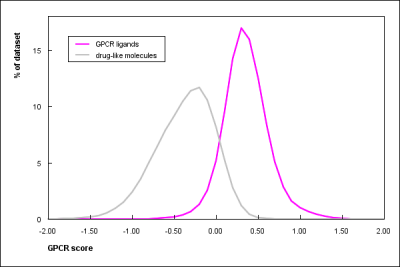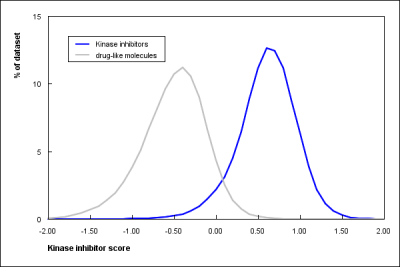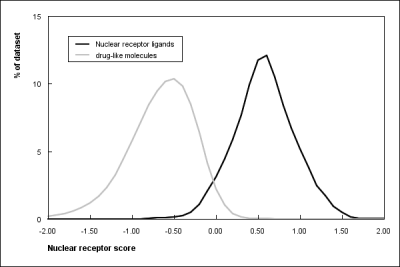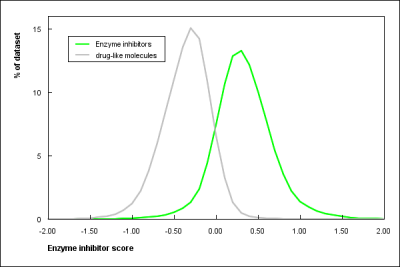
 |
drug-likeness & bioactivity score |
Druglikeness may be defined as a complex balance of various molecular properties and structure features which determine whether particular molecule is similar to the known drugs. These properties, mainly hydrophobicity, electronic distribution, hydrogen bonding characteristics, molecule size and flexibility and of course presence of various pharmacophoric features influence the behavior of molecule in a living organism, including bioavailability, transport properties, affinity to proteins, reactivity, toxicity, metabolic stability and many others.
The diversity of possible drug targets (of which each requires a different combination of matching molecular characteristics) is so enormous, that it is possible to find a common denominator for all of them and to express molecule drug-likeness by a single "magic number". Simple count criteria (like limits for molecular weight, logP, or number of hydrogen bond donors or acceptors) have also relatively limited applicability and are useful only to discard obvious non-drugs.
At Molinspiration we believe that the strategy which leads to success is not a universal drug-likeness score, but focus on particular drug classes and development of specific activity score for each of these classes. The method we implemented uses sophisticated Bayesian statistics to compare structures of representative ligands active on the particular target with structures of inactive molecules and to identify substructure features (which in turn determine physicochemical properties) typical for active molecules.
With the Molinspiration virtual screening toolkit miscreen one can easily develop a screening engine for arbitrary target, provided that several active ligands (in the extreme case only single ligand) are known. No information about 3D structure of the target or the binding mode is necessary. With the trained model it is possible to screen large libraries of hundreds of thousands of molecules in less than hour, to identify molecules with highest chance to become active drugs or pesticides.
Expert system for calculation of druglikeness score towards GPCR ligands, ion channel modulators, kinase inhibitors, nuclear receptor ligands, protease inhibitors and other enzyme targets based on Molinspiration technology may be tested on-line. Validation example for a set of proteases is briefly described here.
On the images below the distribution of activity scores for the six most important drug classes compared with those for "average drug-like molecules" is shown. The larger the value of the score is, the higher is also probability that the particular molecule will be active.
These graphs prove that Molinspiration virtual screening methodology efficiently separates molecules with good drug-likeness from inactive structures.
 |
 |
 |
 |
 |
 |
Calculated distribution of activity scores (version 2011.06) for GPCR ligands, kinase inhibitors, ion channel modulators, nuclear receptor ligands, protease inhibitors and other enzyme targets compared with scores for about 100'000 average drug-like molecules. The score allows efficient separation of active and inactive molecules.
Molinspiration Home Interactive calculation of bioactivity Virtual screening validation